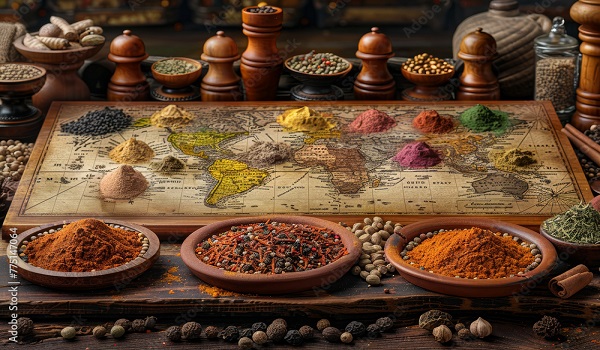India continues to hold its commanding position as the undisputed leader in the global spice industry, serving not only as the largest producer and consumer but also as a major export powerhouse. With a heritage steeped in spice cultivation and the support of modern infrastructure, the country’s spice economy is thriving like never before.
India’s spice production has seen steady and significant growth. In the fiscal year 2022-23, production reached 11.14 million tonnes, slightly surpassing the previous year’s 11.12 million tonnes. This uptick reflects not just higher domestic consumption but also India’s expanding role in satisfying international demand for flavorful, natural ingredients.
The country cultivates around 75 out of the 109 spice varieties recognized by the International Organization for Standardization (ISO), with standout contributions from chilli, cumin, turmeric, ginger, and coriander, together accounting for 76% of total output.
India’s spice exports are scaling new heights, crossing US$ 4.46 billion in 2023-24, up from US$ 3.73 billion in 2022-23. Over the last six years, the export volume has grown at a CAGR of 5.85%, a clear indicator of India’s resilience and adaptability in the global marketplace.
Key export destinations include China, the USA, Bangladesh, the UAE, and Malaysia, collectively contributing to over 60% of the country’s spice export revenue. Notably, China emerged as the top importer of Indian chilli, purchasing US$ 409.44 million worth in 2022-23 alone.
India’s spice belt stretches from Madhya Pradesh and Rajasthan to Kerala and Assam, with each region nurturing specific spices thanks to its unique soil and climate. This geographical diversity strengthens India’s ability to offer a rich and wide range of spices to global markets.
A series of strategic interventions has helped reinforce India’s global dominance. Under the Spices Board of India, the government has initiated:
- Export Development and Promotion of Spices: Enhancing global competitiveness through high-tech processing, branding, and food safety compliance.
- Spice Parks: Eight crop-specific parks established to support end-to-end spice value chains—from farming to packaging.
- Spice Complex in Sikkim: A proposed facility aimed at centralising processing for local farmers in the northeastern region.
The Spices Board continues to play a pivotal role in market promotion, quality regulation, farmer support, and research & development.
With international consumers increasingly drawn to natural flavors and wellness-based ingredients, the demand for Indian spices is set to soar. Government backing, innovative farming practices, and continued focus on quality will ensure that India retains its golden position on the global spice map.
From ancient trade routes to modern-day exports, India’s spice story is not just about flavor—it’s about economic strength, cultural legacy, and global influence.


